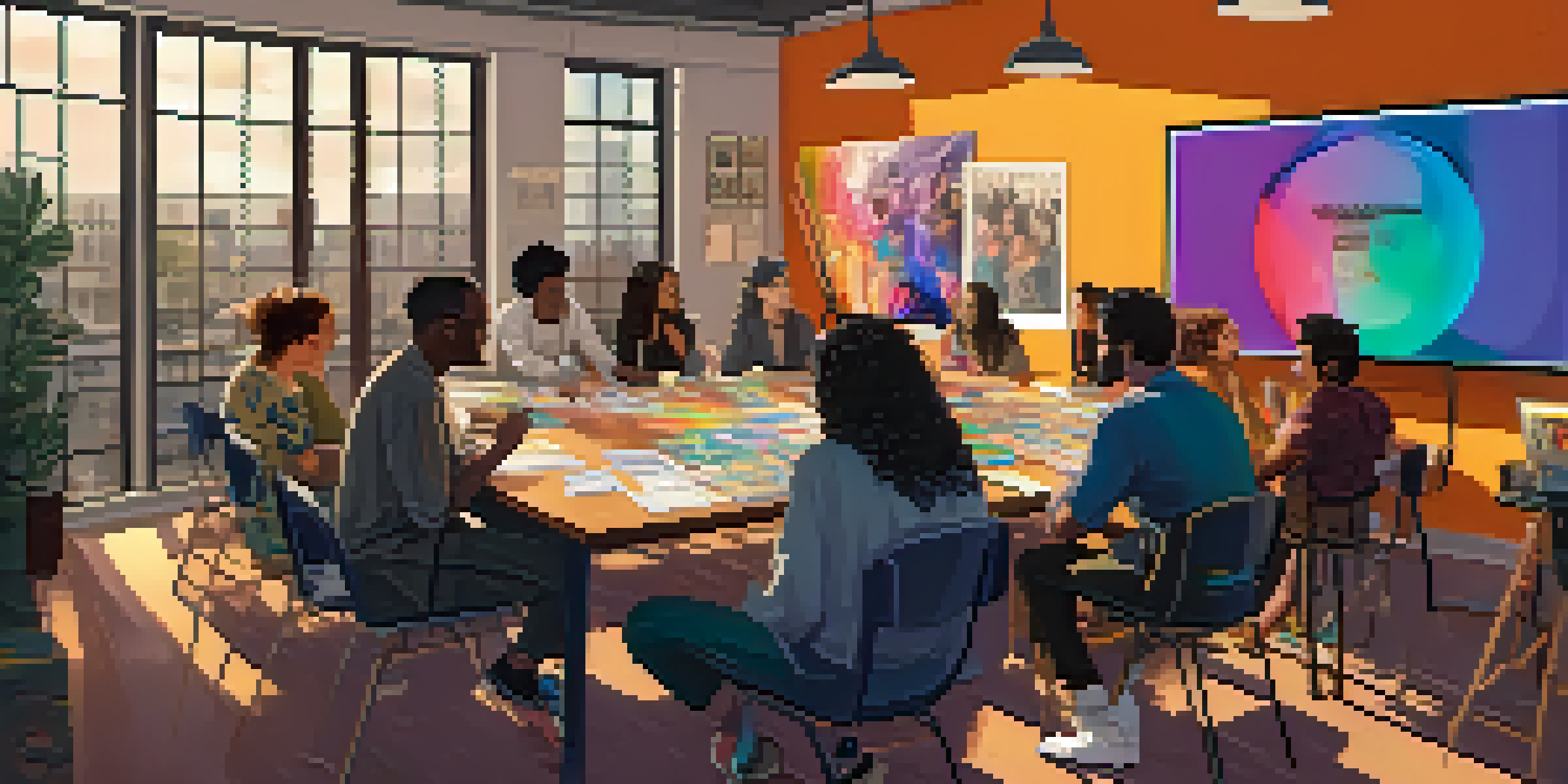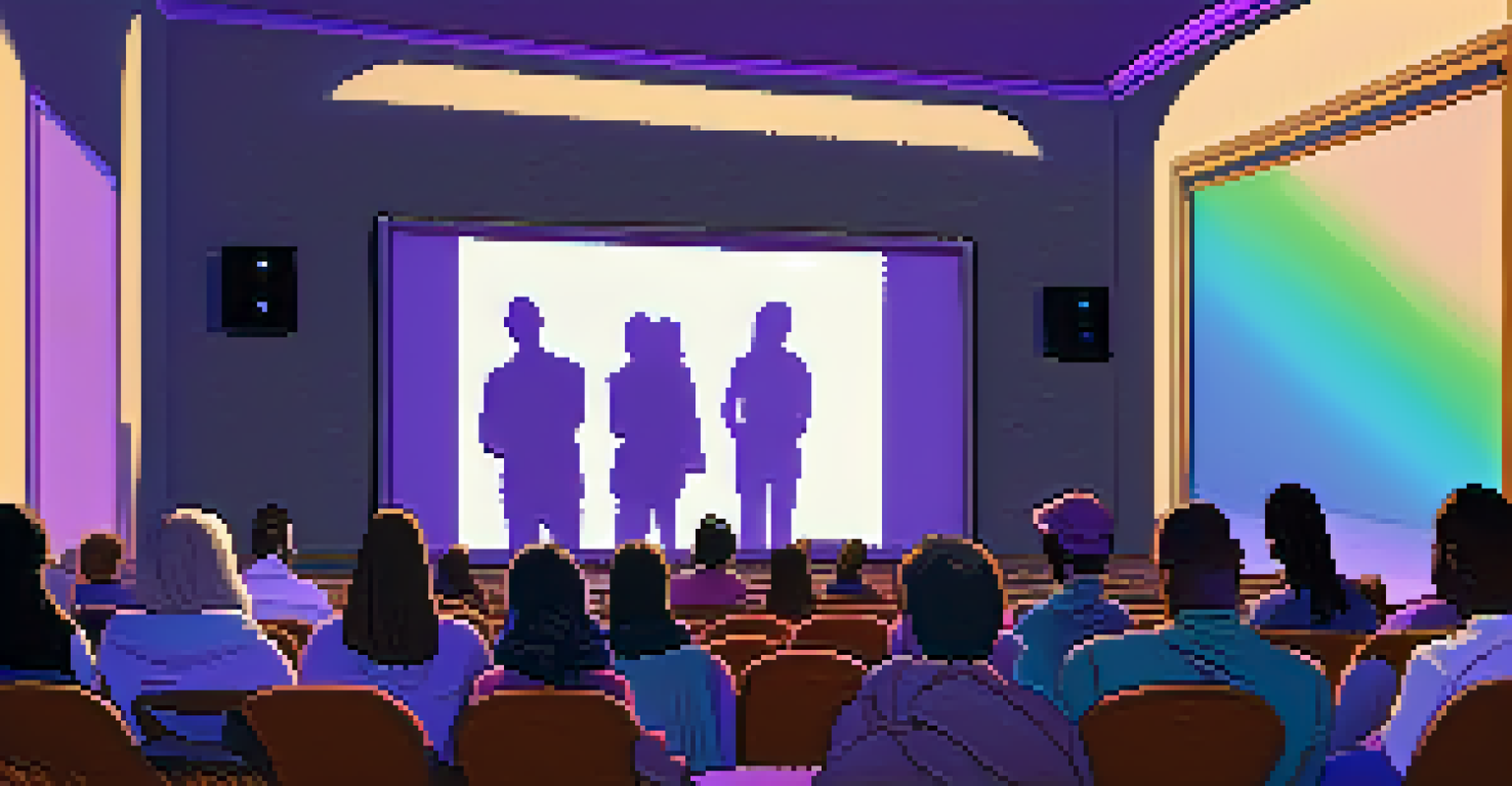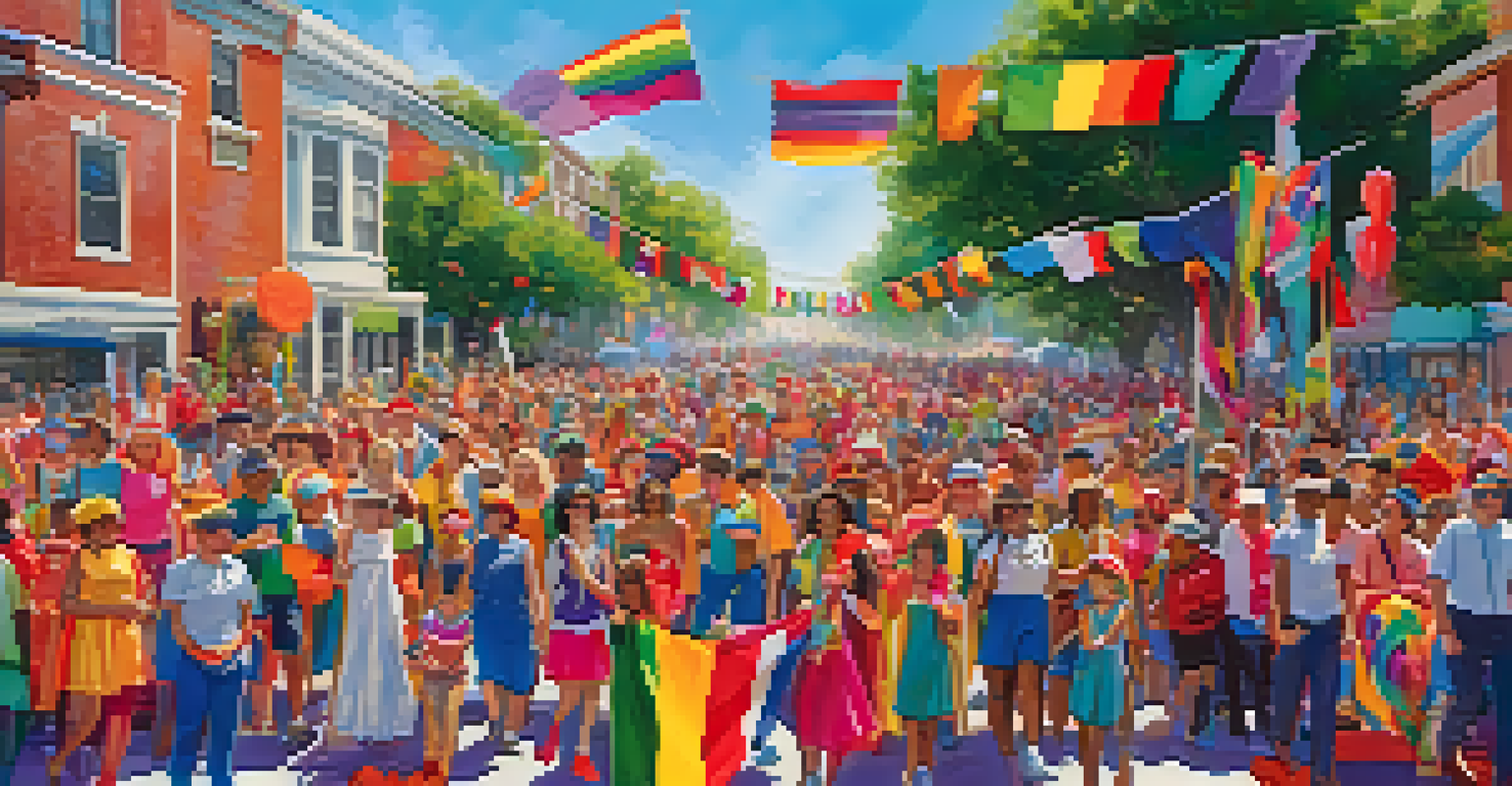Hollywood's Historical Erasure of LGBTQ+ Narratives

The Silent Erasure: A Brief Overview of LGBTQ+ History
Hollywood has long been a powerful tool for storytelling, yet it has often silenced LGBTQ+ narratives. From the early days of cinema to the present, many significant contributions from LGBTQ+ individuals have been overlooked or outright erased. This historical amnesia not only affects public perception but also denies the rich tapestry of experiences that define the LGBTQ+ community.
The most damaging thing we can do to ourselves is to allow our stories to be told by someone else.
In the early 20th century, LGBTQ+ individuals played pivotal roles in shaping Hollywood, yet their stories were rarely told fully or accurately. Instead, they were often relegated to stereotypes or pushed into the shadows. This pattern of omission has created a narrative that skews history and minimizes the impact of LGBTQ+ artists on film and culture.
As a result, the mainstream representation of LGBTQ+ characters and stories has often been limited, reinforcing harmful stereotypes. The lack of visibility has profound implications, particularly for younger generations seeking validation and understanding of their own identities. Recognizing this erasure is the first step towards honoring these stories and their rightful place in cinematic history.
Censorship and the Hays Code: A Barrier to Authenticity
One of the most significant obstacles to LGBTQ+ representation in Hollywood was the Hays Code, implemented in the 1930s. This set of moral guidelines restricted what could be depicted on screen, effectively censoring any overtly queer content. As a result, filmmakers were forced to conceal or alter LGBTQ+ characters and plots, leading to a generation of films that lacked authenticity.

During this era, LGBTQ+ characters were often portrayed as tragic figures or villains, reinforcing negative stereotypes. This censorship not only distorted the realities of LGBTQ+ lives but also perpetuated societal stigma. The impact of the Hays Code was profound, shaping how LGBTQ+ narratives were viewed and accepted by audiences.
Erasure of LGBTQ+ Narratives
Hollywood has historically silenced LGBTQ+ stories, leading to a skewed perception of their contributions and experiences.
The legacy of the Hays Code continues to echo in Hollywood today, as the fear of backlash or censorship can still influence storytelling decisions. However, as society evolves, filmmakers are increasingly challenging these outdated norms. Understanding this historical context is crucial for recognizing how far we've come and the work that still lies ahead.
Groundbreaking Films: The Shift Towards Visibility
Despite the challenges, certain groundbreaking films began to pave the way for more authentic LGBTQ+ narratives. Movies like 'Boys Don't Cry' and 'Moonlight' not only showcased LGBTQ+ experiences but also achieved critical acclaim. These films marked a shift in Hollywood, demonstrating that stories centered on LGBTQ+ lives could resonate with wider audiences.
You can’t be what you can’t see.
The success of these films encouraged filmmakers to explore more diverse narratives, leading to a gradual increase in LGBTQ+ representation. As a result, characters and stories that were once marginalized began to find their way into the mainstream. This shift is essential for creating a more inclusive and representative film industry.
However, even as visibility increases, challenges remain. Many films still struggle with authentic representation, often falling into the trap of tokenism. It's crucial for filmmakers to approach LGBTQ+ narratives with sensitivity and depth, ensuring that these stories are not only told but told well.
The Role of Activism in Shaping Hollywood Narratives
Activism has played a vital role in pushing for greater LGBTQ+ representation in Hollywood. Organizations and advocacy groups have worked tirelessly to raise awareness and demand change, influencing both industry practices and audience expectations. This activism has been essential in challenging the status quo and advocating for authentic storytelling.
High-profile figures within the LGBTQ+ community have also used their platforms to amplify these narratives. By sharing their own experiences, they have helped to humanize LGBTQ+ stories and foster a sense of empathy among audiences. This visibility is crucial in breaking down stereotypes and promoting acceptance.
Censorship's Impact on Authenticity
The Hays Code imposed severe restrictions on LGBTQ+ representation, distorting narratives and reinforcing harmful stereotypes.
As we look to the future, the continued partnership between activists and filmmakers will be key in ensuring that LGBTQ+ stories are told with care and respect. The narrative landscape is shifting, but sustained effort is needed to keep pushing for authentic representation and inclusivity in Hollywood.
The Importance of Intersectionality in LGBTQ+ Stories
Understanding intersectionality is crucial when discussing LGBTQ+ narratives, as it acknowledges the diverse experiences within the community. Factors such as race, gender identity, and socioeconomic status play a significant role in shaping individual stories. Recognizing these intersections allows for a more nuanced portrayal of LGBTQ+ lives in film.
Films that embrace intersectionality can provide audiences with a richer understanding of the complexities within the LGBTQ+ community. This approach not only fosters empathy but also emphasizes the importance of inclusivity in storytelling. By showcasing diverse voices, filmmakers can challenge monolithic narratives and celebrate the multifaceted nature of human experience.
However, the challenge lies in ensuring that these stories are authentically represented. It's essential for creators to collaborate with individuals from marginalized communities, allowing for genuine voices to be heard. This commitment to authenticity not only enriches the narrative but also empowers the community at large.
The Rise of Streaming Services and New Opportunities
The emergence of streaming services has transformed the landscape of storytelling, providing new opportunities for LGBTQ+ narratives to flourish. Platforms like Netflix, Hulu, and Amazon Prime have become champions for diversity, often featuring original content that centers on LGBTQ+ experiences. This shift has opened doors for storytellers who previously faced barriers in traditional Hollywood.
With the ability to reach global audiences, streaming services have the power to amplify underrepresented voices and stories. This democratization of content creation allows for a wider array of narratives to emerge, reflecting the richness of LGBTQ+ experiences. As viewers increasingly seek authentic representation, the demand for these stories continues to grow.
Activism Drives Change in Hollywood
Advocacy and activism have been crucial in pushing for greater LGBTQ+ representation, leading to more authentic storytelling in film.
However, it's important for creators to remain vigilant in their storytelling. With the rise of representation comes the risk of tokenism or shallow portrayals. To truly honor LGBTQ+ narratives, filmmakers must commit to deep, meaningful storytelling that resonates with audiences and reflects the true diversity of the community.
Looking Ahead: The Future of LGBTQ+ Representation in Hollywood
As we look to the future, the conversation around LGBTQ+ representation in Hollywood is more important than ever. Emerging filmmakers and artists are challenging conventions and pushing boundaries, striving to create authentic narratives that reflect their experiences. This new wave of storytellers has the potential to reshape how LGBTQ+ characters and stories are portrayed on screen.
The increasing visibility of LGBTQ+ individuals in various facets of the industry, from acting to directing, is encouraging. With more diverse voices behind the camera, there's a greater opportunity for honest storytelling that resonates with audiences. This evolution is essential for fostering a more inclusive film landscape.

Ultimately, the future of LGBTQ+ representation depends on our collective willingness to advocate for change. By supporting diverse narratives and creators, audiences can play a pivotal role in shaping Hollywood's storytelling landscape. The journey towards authentic representation is ongoing, but with continued effort, we can ensure that all voices are heard and celebrated.